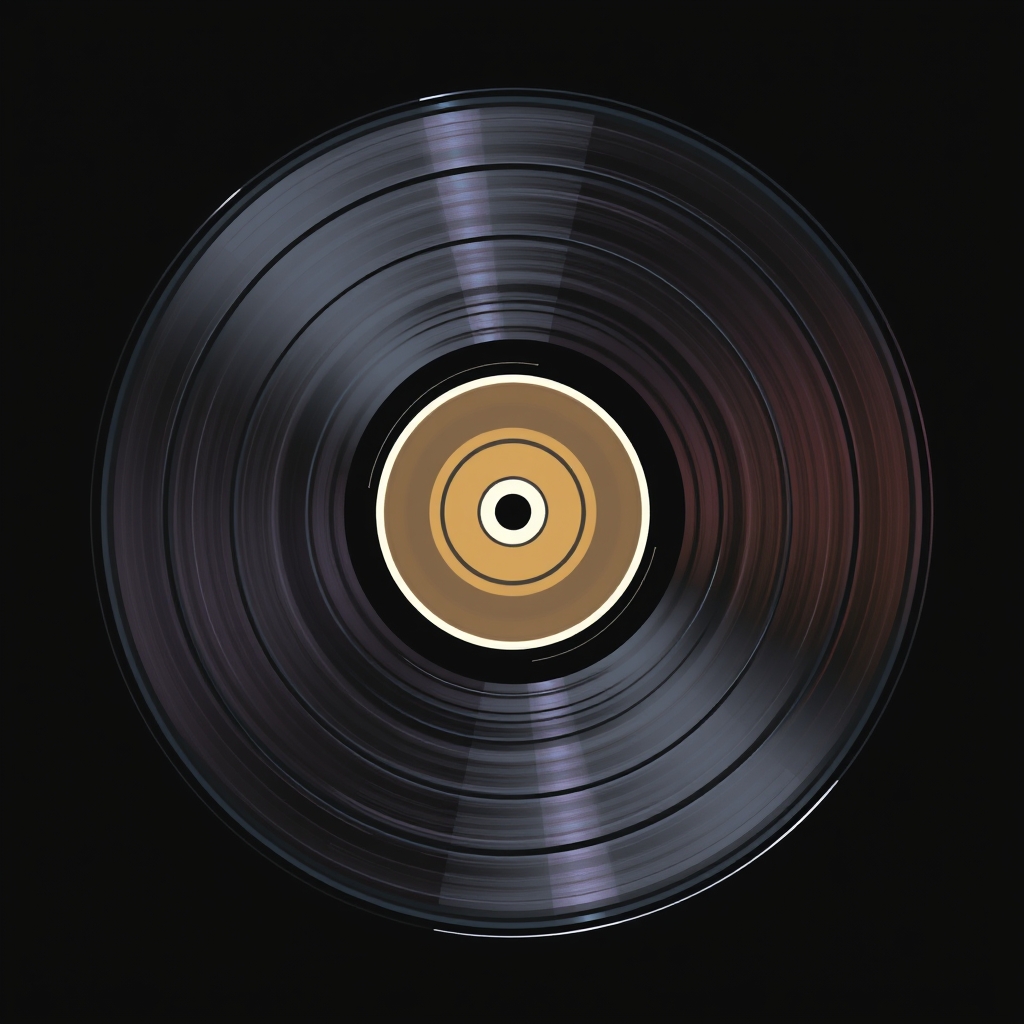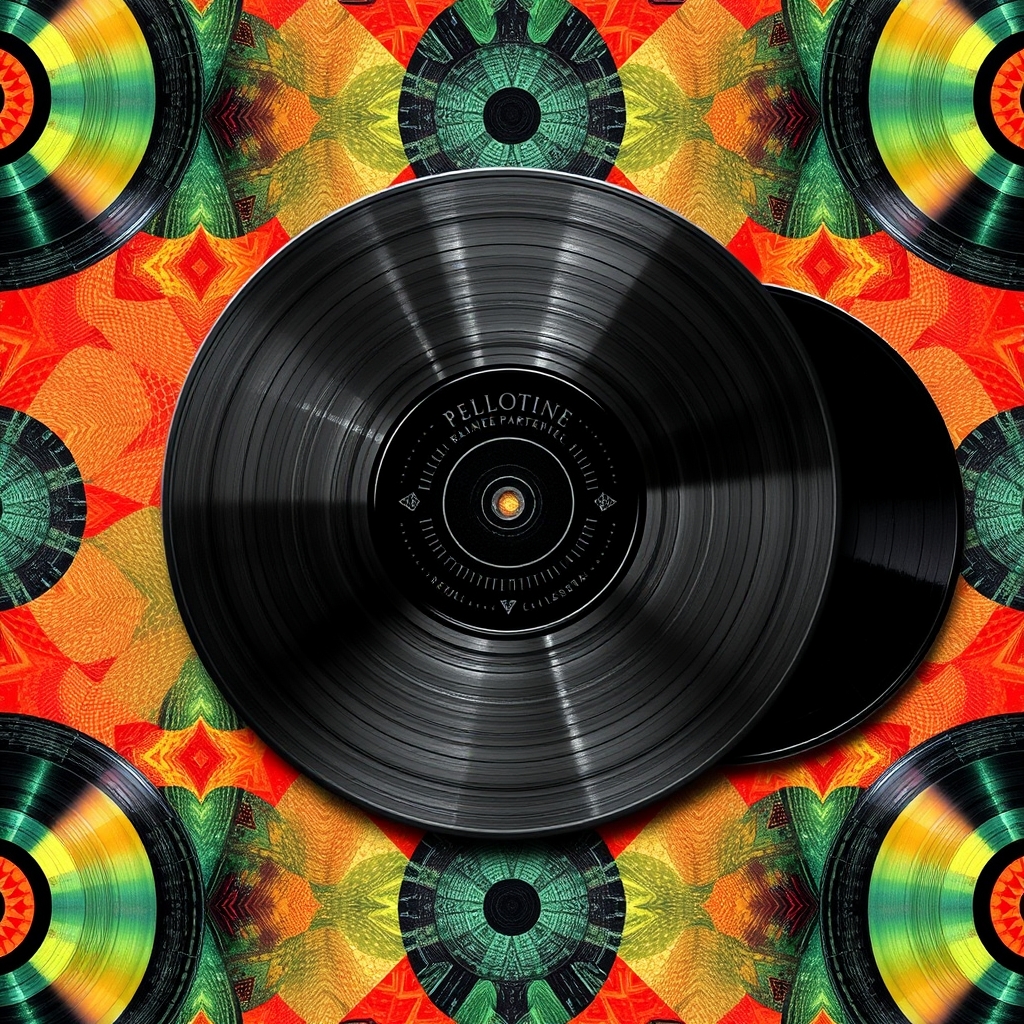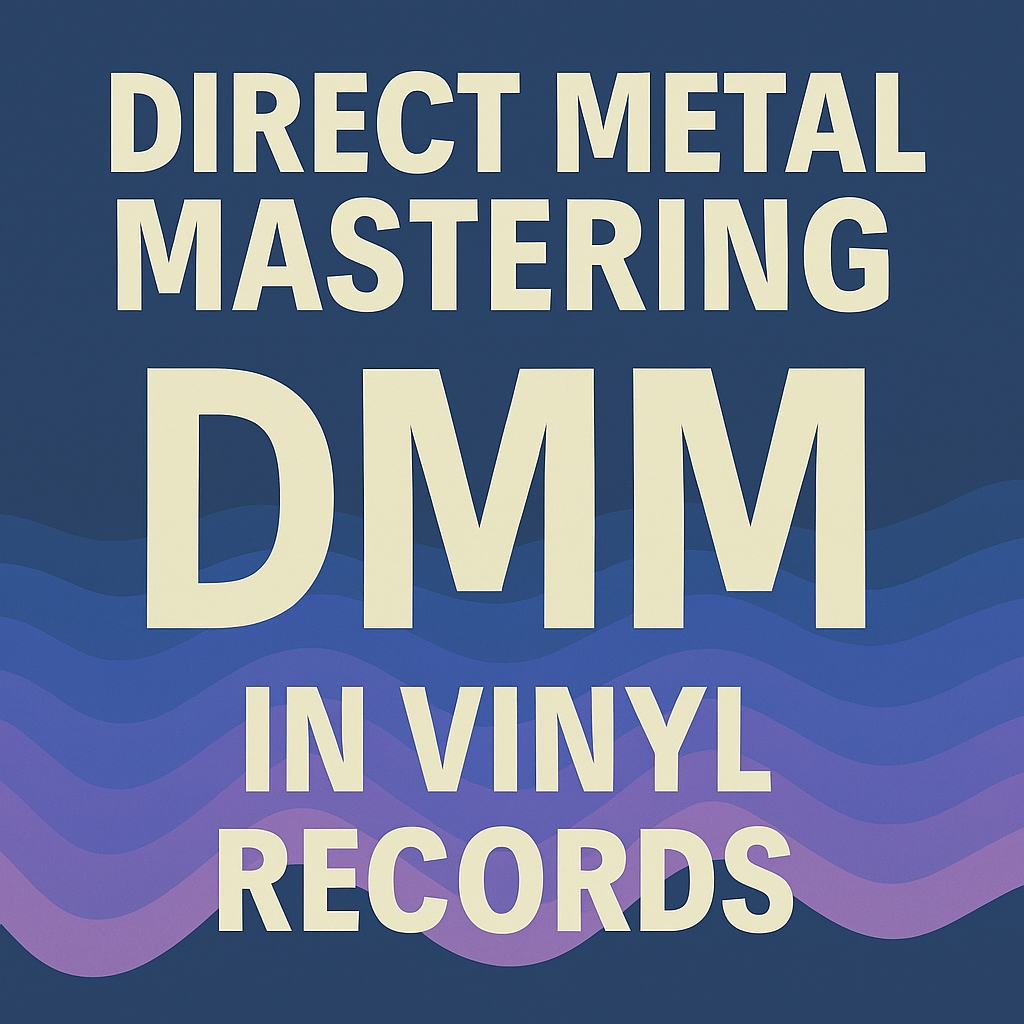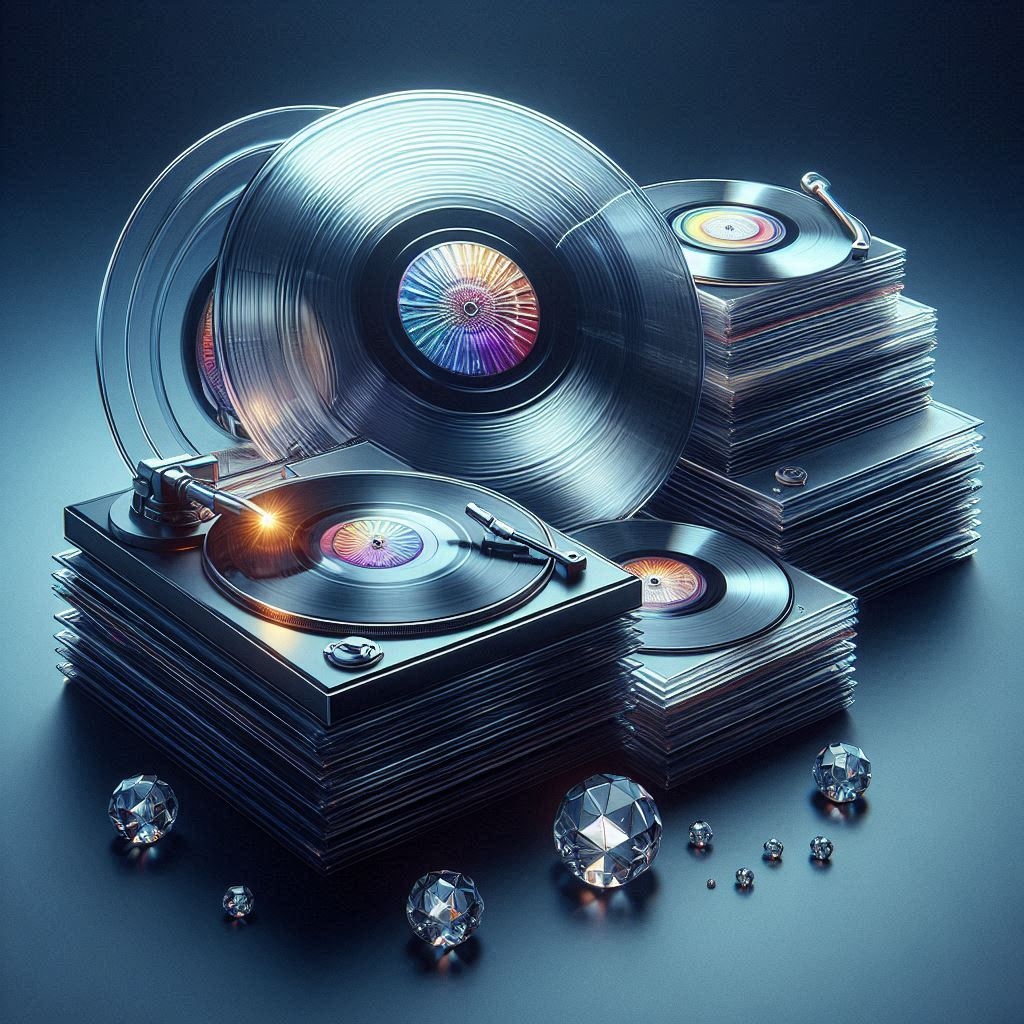CD And Vinyl
What Is The Difference – A Tale Of Two Formats
Compact Discs and Vinyl Records represent two distinct eras of music consumption, each with its own technological foundation, cultural significance, and sonic identity. While CDs emerged in the 1980s as a digital revolution in audio fidelity, vinyl records trace their lineage to the analog grooves of the late 19th century. This comparison is not merely technical—it is emotional, tactile, and symbolic. The resurgence of vinyl in recent years has reignited debates about sound quality, listening rituals, and the value of physical media. This comprehensive breakdown explores every facet of the CD-versus-vinyl dichotomy, from audio encoding and durability to cultural nostalgia and artistic presentation.
Physical Media Format – Compact Precision Versus Grooved Grandeur
Material Composition And Size
CDs are made from polycarbonate plastic with a reflective aluminum layer, measuring 120mm in diameter. Vinyl records are crafted from polyvinyl chloride, typically 12 inches in diameter for LPs, with grooves etched into their surface.
Playback Mechanism And Equipment
CDs are read by lasers that interpret digital data encoded in pits. Vinyl records require a stylus that physically traces analog grooves, translating vibrations into sound.
Storage And Portability
CDs are lightweight, compact, and easily stored in jewel cases. Vinyl records are bulkier, more fragile, and require careful handling and vertical storage to prevent warping.
| Attribute | CD | Vinyl Record |
|---|---|---|
| Diameter | 120mm | 7″, 10″, or 12″ |
| Material | Polycarbonate + Aluminum | Polyvinyl Chloride |
| Playback | Laser Optical | Stylus and Cartridge |
| Portability | Highly Portable | Less Portable |
| Storage | Compact Cases | Requires Vertical Shelving |

Sound Quality – Digital Clarity Versus Analog Warmth
Frequency Response And Dynamic Range
CDs offer a frequency range of 20Hz to 20kHz with a dynamic range of about 96dB. Vinyl records vary depending on mastering but typically offer a narrower dynamic range and frequency response.
Noise Floor And Distortion
CDs have a low noise floor and minimal distortion due to digital encoding. Vinyl records are susceptible to surface noise, pops, and harmonic distortion, which some listeners find pleasing.
Subjective Listening Experience
Many audiophiles describe vinyl as warmer and more natural, while CDs are praised for precision and clarity. These perceptions are often influenced by playback equipment and mastering quality.
| Attribute | CD | Vinyl Record |
|---|---|---|
| Frequency Range | 20Hz–20kHz | Varies, often narrower |
| Dynamic Range | ~96dB | ~55–70dB |
| Noise Floor | Very Low | Higher, includes surface noise |
| Distortion | Minimal | Harmonic and Mechanical |
| Listener Preference | Clarity and Precision | Warmth and Texture |
Durability – Scratch Resistance Versus Groove Sensitivity
Wear And Tear Over Time
CDs resist wear unless scratched deeply. Vinyl records degrade with repeated play due to stylus friction and environmental exposure.
Environmental Sensitivity
CDs are sensitive to extreme heat and light but generally stable. Vinyl records warp under heat and attract dust and static.
Longevity And Archival Value
Properly stored CDs can last decades without degradation. Vinyl records require meticulous care but can remain playable for generations.
| Attribute | CD | Vinyl Record |
|---|---|---|
| Scratch Resistance | Moderate | Low |
| Heat Sensitivity | High | Very High |
| Dust Attraction | Low | High |
| Lifespan | 20–50 Years | 50+ Years With Care |
| Maintenance | Minimal | High |
Cultural Impact – Digital Revolution Versus Analog Ritual
Historical Context And Adoption
CDs revolutionized music distribution in the 1980s, replacing cassettes and vinyl. Vinyl records dominated from the 1950s to the early 1980s and have seen a revival since the 2010s.
Listening Rituals And Symbolism
CDs offer instant access and track skipping. Vinyl demands deliberate engagement—flipping sides, cueing tracks, and appreciating album art.
Artistic Presentation And Packaging
CDs feature compact booklets and jewel cases. Vinyl records showcase large-format artwork, lyric sheets, and collectible inserts.
| Attribute | CD | Vinyl Record |
|---|---|---|
| Era Of Dominance | 1980s–2000s | 1950s–1980s, 2010s Revival |
| Listening Ritual | Convenient | Immersive |
| Artwork Size | Small Booklet | Large Sleeve |
| Cultural Symbolism | Digital Efficiency | Analog Nostalgia |
| Collector Appeal | Moderate | High |
Technical Encoding – Binary Bits Versus Grooved Waves
Data Format And Compression
CDs use PCM encoding at 16-bit/44.1kHz resolution. Vinyl records store analog waveforms directly in grooves.
Error Correction And Fidelity
CDs include error correction algorithms to maintain fidelity. Vinyl playback is continuous but vulnerable to physical imperfections.
Mastering Differences
CDs are often mastered for loudness and clarity. Vinyl mastering requires dynamic range preservation and groove spacing considerations.
| Attribute | CD | Vinyl Record |
|---|---|---|
| Encoding Format | Digital PCM | Analog Waveform |
| Bit Depth | 16-bit | Not Applicable |
| Sample Rate | 44.1kHz | Continuous |
| Error Correction | Yes | No |
| Mastering Style | Loudness Optimized | Dynamic Range Preserved |
Market Trends – Decline And Revival
Sales Figures And Popularity
CD sales have declined steadily since the rise of streaming. Vinyl sales have surged, especially among younger listeners and collectors.
Demographics And Preferences
CDs appeal to older consumers and archivists. Vinyl attracts audiophiles, artists, and fans of physical media.
Retail And Distribution
CDs are often sold in electronic stores and online bundles. Vinyl records thrive in independent shops, record fairs, and artist merch tables.
| Attribute | CD | Vinyl Record |
|---|---|---|
| Sales Trend | Declining | Rising |
| Audience | Archivists, Older Listeners | Audiophiles, Collectors |
| Retail Channels | Electronics, Online | Indie Shops, Fairs |
| Streaming Impact | High | Moderate |
| Collector Value | Low | High |
Environmental Impact – Plastic Versus Petroleum
Manufacturing Footprint
CDs require polycarbonate and aluminum, with moderate energy use. Vinyl records use petroleum-based PVC, with higher emissions.
Recyclability And Waste
CDs are difficult to recycle due to mixed materials. Vinyl records are rarely recycled and often end up in landfills.
Sustainability Innovations
Some companies are exploring biodegradable CDs and recycled vinyl pressings. Digital formats reduce physical waste but raise data center concerns.
| Attribute | CD | Vinyl Record |
|---|---|---|
| Material Source | Plastic + Metal | Petroleum-Based PVC |
| Recyclability | Low | Very Low |
| Emissions | Moderate | High |
| Sustainability Efforts | Emerging | Niche |
| Waste Profile | Long-Term | Persistent |
User Experience – Convenience Versus Ceremony
Ease Of Use And Accessibility
CDs are plug-and-play with minimal setup. Vinyl requires turntables, cartridges, and manual operation.
Track Navigation And Control
CDs allow instant skipping and programming. Vinyl playback is linear, requiring manual cueing.
Tactile And Emotional Engagement
CDs offer clean, efficient access. Vinyl provides a ritualistic, hands-on experience that many find emotionally rewarding.
| Attribute | CD | Vinyl Record |
|---|---|---|
| Setup Time | Instant | Manual |
| Track Control | Skip, Repeat, Shuffle | Manual Cueing |
| Emotional Impact | Functional | Sentimental |
| Accessibility | High | Moderate |
| User Engagement | Passive | Active |

Artistic Integrity – Loudness Wars Versus Dynamic Preservation
Mastering Practices And Loudness
CDs often suffer from over-compression in mastering, reducing dynamic range. Vinyl mastering preserves dynamics due to physical limitations.
Album Flow And Intent
CDs may alter track order or fade-outs for digital optimization. Vinyl sequencing is often deliberate, with side breaks influencing pacing.
Artist Preferences And Statements
Many artists release vinyl editions to preserve sonic intent and offer a more immersive experience.
| Attribute | CD | Vinyl Record |
|---|---|---|
| Loudness Compression | Common | Limited |
| Track Sequencing | Flexible | Intentional |
| Artistic Control | Variable | High |
| Listener Immersion | Moderate | Deep |
| Format Statement | Neutral | Symbolic |
Technological Evolution – Obsolescence Versus Revival
Hardware Availability And Consumer Trends
CD players are increasingly absent from modern laptops, cars, and home entertainment systems. Vinyl turntables, once considered obsolete, are now widely available in both budget and high-end formats, often bundled with Bluetooth and USB connectivity.
Format Longevity And Adaptability
CDs face obsolescence due to streaming platforms and cloud storage. Vinyl records, despite their analog nature, have adapted through modern pressing techniques and digital remastering for analog playback.
Innovation And Hybrid Models
Some manufacturers offer hybrid players that support both CD and vinyl formats, catering to collectors and nostalgic consumers. These devices symbolize a bridge between eras, offering versatility without sacrificing ritual.
| Attribute | CD | Vinyl Record |
|---|---|---|
| Hardware Presence | Declining | Expanding |
| Format Longevity | Threatened By Streaming | Reinforced By Revival |
| Innovation | Minimal | Hybrid And Boutique Pressings |
| Consumer Demand | Low | Rising |
| Adaptability | Limited | High |
Cost And Value – Mass Production Versus Boutique Pricing
Production Costs And Retail Pricing
CDs are inexpensive to produce and often sold at low prices. Vinyl records require more complex manufacturing and are priced higher, especially for limited editions.
Resale And Collector Markets
CDs have minimal resale value. Vinyl records, especially rare pressings, can command high prices in collector circles.
Perceived Value And Investment
Vinyl is often viewed as a collectible investment, while CDs are seen as utilitarian. This perception influences purchasing behavior and long-term ownership.
| Attribute | CD | Vinyl Record |
|---|---|---|
| Production Cost | Low | Moderate To High |
| Retail Price | Affordable | Premium |
| Resale Value | Low | High |
| Collector Appeal | Minimal | Strong |
| Investment Potential | Low | Moderate To High |
Accessibility And Inclusivity – Universal Design Versus Niche Appeal
Availability Across Regions
CDs are widely available in mainstream retail and online platforms. Vinyl records are more common in urban centers and niche stores.
Playback Accessibility
CDs are easier for people with limited mobility or visual impairments due to automated playback. Vinyl requires manual handling, which may be less inclusive.
Language And Genre Diversity
Both formats support diverse genres and languages, but vinyl often emphasizes niche and indie releases, while CDs cater to mass-market distribution.
| Attribute | CD | Vinyl Record |
|---|---|---|
| Regional Access | Global | Urban/Niche |
| Inclusivity | High | Moderate |
| Genre Diversity | Broad | Focused |
| Language Options | Extensive | Selective |
| User Interface | Simple | Manual |
Data Storage And Backup – Archival Stability Versus Analog Permanence
Digital Backup And Duplication
CDs can be ripped and backed up digitally. Vinyl records require analog-to-digital conversion for archival purposes.
Data Integrity And Corruption
CDs may suffer from disc rot or data corruption over time. Vinyl degradation is physical and gradual, often audible before complete failure.
Preservation Techniques
CDs benefit from cloud storage and duplication. Vinyl preservation involves climate control, anti-static sleeves, and careful handling.
| Attribute | CD | Vinyl Record |
|---|---|---|
| Backup Options | Digital Ripping | Analog Conversion |
| Data Integrity | Vulnerable To Rot | Physical Wear |
| Preservation Tools | Software + Cloud | Sleeves + Climate Control |
| Duplication Ease | High | Low |
| Archival Stability | Moderate | High With Care |
Art And Design – Jewel Cases Versus Gatefold Glory
Visual Presentation And Format
CDs offer compact artwork and inserts. Vinyl records showcase large-scale visuals, gatefold designs, and tactile packaging.
Typography And Layout
CD booklets use small fonts and condensed layouts. Vinyl sleeves allow expansive typography and visual storytelling.
Design As Experience
Vinyl packaging is often part of the listening ritual, with posters, lyric sheets, and textured sleeves enhancing the experience.
| Attribute | CD | Vinyl Record |
|---|---|---|
| Artwork Size | Small | Large |
| Typography | Compact | Expansive |
| Packaging Style | Jewel Case | Gatefold, Textured |
| Design Experience | Functional | Immersive |
| Collector Editions | Rare | Common |
Genre And Subculture – Pop Efficiency Versus Indie Credibility
Mainstream Versus Underground
CDs dominate pop, classical, and mainstream genres. Vinyl is favored in indie, jazz, punk, and experimental circles.
Subcultural Identity And Symbolism
Vinyl ownership often signals subcultural affiliation—DIY ethos, audiophile pride, or artistic rebellion. CDs are less symbolic but still valued in archival and professional contexts.
Format-Specific Releases
Some artists release vinyl-only editions to preserve exclusivity. CD-only releases are common in promotional and international contexts.
| Attribute | CD | Vinyl Record |
|---|---|---|
| Genre Dominance | Pop, Classical | Indie, Jazz, Punk |
| Subcultural Value | Low | High |
| Format Exclusivity | Promotional | Artistic |
| Symbolic Identity | Neutral | Expressive |
| Community Ties | Weak | Strong |
Manufacturing Process – Injection Molding Versus Pressed Grooves
Production Techniques And Workflow
CDs are manufactured through injection molding, where polycarbonate discs are stamped with microscopic pits and coated with reflective metal. Vinyl records are pressed from heated PVC pellets using metal stampers that imprint analog grooves.
Quality Control And Consistency
CD production yields highly consistent results with minimal variation. Vinyl pressing can vary due to stamper wear, temperature fluctuations, and groove alignment, leading to occasional defects or sonic inconsistencies.
Scalability And Customization
CDs are ideal for mass production and rapid duplication. Vinyl pressing is slower, more artisanal, and often limited to smaller batches, especially for indie releases.
| Attribute | CD | Vinyl Record |
|---|---|---|
| Manufacturing Method | Injection Molding | Groove Pressing |
| Material Handling | Automated | Manual + Mechanical |
| Consistency | High | Variable |
| Production Speed | Fast | Slow |
| Customization | Limited | High |
Playback Speed – Digital Precision Versus Rotational Mechanics
Speed Regulation And Stability
CDs spin at variable speeds depending on track location, regulated by digital controllers. Vinyl records rotate at fixed speeds—typically 33⅓ or 45 RPM—requiring precise motor calibration.
Impact On Sound Quality
CD speed variation is imperceptible due to digital buffering. Vinyl playback speed affects pitch and timing, with even slight deviations causing audible distortion.
User Control And Adjustment
CD players automatically manage speed. Vinyl turntables may allow manual speed switching, offering flexibility for different record types but requiring user awareness.
| Attribute | CD | Vinyl Record |
|---|---|---|
| Speed Type | Variable (Digital) | Fixed (Mechanical) |
| Common Speeds | Auto-Regulated | 33⅓, 45 RPM |
| Speed Accuracy | High | Depends On Motor Quality |
| User Control | None | Manual |
| Sound Impact | Minimal | Audible If Misaligned |
Genre Fidelity – Format-Specific Sonic Identity
Genre-Specific Mastering
CDs often favor pop, electronic, and classical genres with clean, compressed mastering. Vinyl excels in jazz, rock, and acoustic recordings where dynamic range and warmth are prized.
Historical Associations
Vinyl is historically linked to soul, funk, and psychedelic rock. CDs are associated with the rise of digital pop, techno, and orchestral clarity.
Artist Intent And Format Choice
Some artists tailor releases to format strengths—opting for vinyl to emphasize analog textures or CDs for pristine digital layering.
| Attribute | CD | Vinyl Record |
|---|---|---|
| Genre Strengths | Pop, Classical, Electronic | Jazz, Rock, Acoustic |
| Historical Ties | Digital Era | Analog Legacy |
| Mastering Style | Compressed | Dynamic |
| Format Preference | Precision | Texture |
| Sonic Identity | Clean | Warm |
Symbolic Meaning – Efficiency Versus Ritual
Cultural Symbolism And Identity
CDs symbolize technological progress, efficiency, and the digital age. Vinyl represents nostalgia, ritual, and artistic depth.
Ownership And Emotional Connection
CDs are often seen as functional media. Vinyl ownership is emotional, tied to memory, identity, and personal storytelling.
Symbolic Use In Media
Vinyl is frequently used in film and advertising to evoke authenticity and retro charm. CDs are used to signal modernity or archival precision.
| Attribute | CD | Vinyl Record |
|---|---|---|
| Symbolism | Digital Efficiency | Analog Ritual |
| Emotional Value | Moderate | High |
| Media Representation | Modern | Nostalgic |
| Ownership Identity | Functional | Personal |
| Cultural Weight | Light | Heavy |

Packaging Innovation – Jewel Case Versus Artistic Canvas
Design Flexibility And Format
CDs are constrained by jewel case dimensions. Vinyl packaging allows gatefolds, die-cuts, embossing, and textured finishes.
Interactive Elements
Vinyl sleeves may include posters, inserts, and tactile surprises. CD booklets are limited to printed text and images.
Branding And Merchandising
Vinyl packaging is often used as a branding tool, with visual storytelling and collectible appeal. CDs focus on compactness and shelf efficiency.
| Attribute | CD | Vinyl Record |
|---|---|---|
| Packaging Format | Jewel Case | Gatefold, Custom Sleeves |
| Design Innovation | Limited | Expansive |
| Interactive Elements | Minimal | Posters, Inserts |
| Branding Potential | Moderate | High |
| Shelf Presence | Compact | Bold |
Playback Ritual – Instant Access Versus Manual Engagement
Setup And Operation
CDs require minimal setup—insert and play. Vinyl demands stylus alignment, cueing, and side flipping.
Listening Flow
CDs support shuffle, repeat, and playlists. Vinyl encourages full-album listening and intentional pacing.
User Involvement
CD playback is passive. Vinyl listening is active, immersive, and often ceremonial.
| Attribute | CD | Vinyl Record |
|---|---|---|
| Setup Complexity | Low | High |
| Listening Style | Fragmented | Cohesive |
| User Role | Passive | Active |
| Playback Control | Automated | Manual |
| Ritual Depth | Shallow | Deep |
Technological Legacy – Digital Footprint Versus Analog Heritage
Historical Milestones
CDs marked the transition to digital media, influencing software, gaming, and data storage. Vinyl records shaped radio, DJ culture, and analog engineering.
Influence On Other Industries
CD technology influenced DVDs, Blu-rays, and digital archiving. Vinyl’s groove-based mechanics inspired turntablism and analog synthesis.
Legacy Preservation
CDs are archived digitally. Vinyl records are preserved physically, often as cultural artifacts.
| Attribute | CD | Vinyl Record |
|---|---|---|
| Historical Impact | Digital Revolution | Analog Foundation |
| Cross-Industry Use | Data, Video, Software | DJing, Broadcasting |
| Legacy Format | Digital Archives | Physical Artifacts |
| Cultural Influence | Moderate | Deep |
| Preservation Method | Cloud + Disc | Sleeve + Shelf |
Playback Equipment – Laser Optics Versus Mechanical Precision
Core Components
CD players use lasers, motors, and digital converters. Turntables rely on tonearms, cartridges, and mechanical platters.
Maintenance And Calibration
CD players require minimal upkeep. Turntables need regular stylus replacement, belt checks, and anti-skate calibration.
Upgrade Path And Modularity
CD systems are often closed. Vinyl setups are modular, allowing upgrades to cartridges, preamps, and isolation platforms.
| Attribute | CD | Vinyl Record |
|---|---|---|
| Core Technology | Laser + Digital | Mechanical + Analog |
| Maintenance Level | Low | High |
| Modularity | Limited | Extensive |
| Upgrade Options | Few | Many |
| Calibration Needs | Minimal | Frequent |
Educational Value – Format As Teaching Tool
Understanding Sound Principles
CDs teach digital encoding, sampling, and error correction. Vinyl introduces analog waveforms, mechanical vibration, and groove geometry.
STEM And Music Education
CDs are used in digital audio courses. Vinyl is used in physics, acoustics, and design education.
Hands-On Learning
Vinyl offers tactile learning—groove inspection, stylus alignment, and manual cueing. CDs are more abstract, focusing on data structures.
| Attribute | CD | Vinyl Record |
|---|---|---|
| Educational Use | Digital Audio | Analog Mechanics |
| STEM Integration | Encoding + Compression | Vibration + Geometry |
| Hands-On Value | Low | High |
| Teaching Context | Software-Based | Physical Demonstration |
| Conceptual Depth | Abstract | Tangible |
Global Reach – Format Distribution Across Cultures
International Adoption
CDs achieved global saturation in the 1990s, becoming the dominant format worldwide. Vinyl records have regional strongholds—Japan, Germany, and the US lead in production and consumption.
Cultural Preferences
CDs are preferred in archival and classical contexts in Asia and Europe. Vinyl is embraced by youth subcultures, DJs, and collectors across continents.
Export And Import Dynamics
CDs are easy to ship and duplicate. Vinyl records require careful packaging and climate-controlled transport.
| Attribute | CD | Vinyl Record |
|---|---|---|
| Global Saturation | High | Moderate |
| Cultural Affinity | Archival | Subcultural |
| Distribution Ease | Easy | Complex |
| Regional Strengths | Asia, Europe | US, Japan, Germany |
| Format Identity | Universal | Localized |
Conclusion – Choosing Between Precision And Presence
The difference between CD and vinyl is not merely technical—it is experiential, emotional, and symbolic. CDs offer precision, convenience, and digital clarity. Vinyl records deliver warmth, ritual, and artistic immersion. Each format carries its own legacy, shaped by technological evolution and cultural resonance. For some, CDs represent the pinnacle of digital fidelity. For others, vinyl is a tactile portal into music’s soul. The choice between them is not binary—it is personal, contextual, and ever-evolving.
Join The Discussion – Share Your Format Rituals
Do you cue your vinyl with reverence or shuffle CDs with speed? Have you built a collection that spans both formats, or do you swear by one?
#VinylVersusCD #MusicFormatsExplained #AnalogVsDigital #SoundQualityDebate #CollectorCulture #ListeningRituals #FormatFidelity #CDRevival #VinylExperience #MusicMediaMatters















Leave a Reply